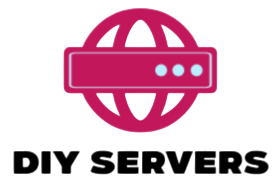Virtual reality (VR) technology has arisen as a flexible device with applications stretching out past the domains of diversion and gaming. As of late, there has been a developing interest in utilizing VR frameworks for treatment and recovery purposes. The vivid and intelligent nature of virtual reality opens up additional opportunities for upgrading conventional remedial methodologies and further developing restoration results. Hong Kong businesses embrace cutting-edge vr solution hong kong, transforming experiences and revolutionizing industries through immersive virtual reality technologies.
Helpful utilizations of virtual reality are different, covering different fields like emotional wellness, actual recovery, and torment the executives. In the domain of emotional wellness, VR treatment has been utilized to deal with conditions like nervousness problems, fears, and post-awful pressure issue (PTSD). The vivid climate made by VR permits people to face and explore through recreated situations that mirror genuine circumstances, giving a controlled and directed openness to their feelings of trepidation or stressors. This openness treatment inside a virtual setting can be an amazing asset in assisting people with conquering mental difficulties.
In the area of actual restoration, VR frameworks have shown to be important guides for patients recuperating from wounds or medical procedures. The intuitive idea of virtual reality takes into account connecting with and adjustable activities custom fitted to a singular’s particular necessities. This makes recovery practices more fascinating as well as empowers specialists to screen and change the trouble level progressively. VR-based restoration programs add to expanded patient commitment and adherence to endorsed works out, significant variables for effective recuperation.

Moreover, virtual reality is progressively being utilized in neurological restoration, especially for people with conditions like stroke or horrible cerebrum wounds. VR frameworks offer a dynamic and versatile stage for neurorehabilitation works out, advancing the relearning of coordinated movements and upgrading mental capabilities. The vivid idea of VR draws in patients in a multisensory experience, animating both engine and mental pathways to work with the recuperation cycle.
One of the striking benefits of involving virtual reality in treatment and restoration is the capacity to establish a protected and controlled climate for patients. In conventional treatment, openness to specific improvements or proactive tasks might present dangers or difficulties. VR permits specialists to painstakingly plan situations that mirror genuine circumstances while keeping a degree of control that guarantees patient security. This controlled openness is especially helpful in situations where progressive and directed renewed introduction to explicit exercises is critical for recovery.
In Conclusion, the joining of virtual reality frameworks into treatment and restoration rehearses marks a critical progression in the medical care scene. From emotional wellness mediations to actual restoration, VR technology offers a flexible and connecting with stage for upgrading remedial results. As the technology keeps on developing, the potential for virtual reality to turn into a standard instrument in different remedial and restoration settings is promising, opening up new roads for customized and powerful quiet consideration.Thevr solution hongkongredefine engagement, offering innovative and tailored experiences that elevate industries and user interactions.

